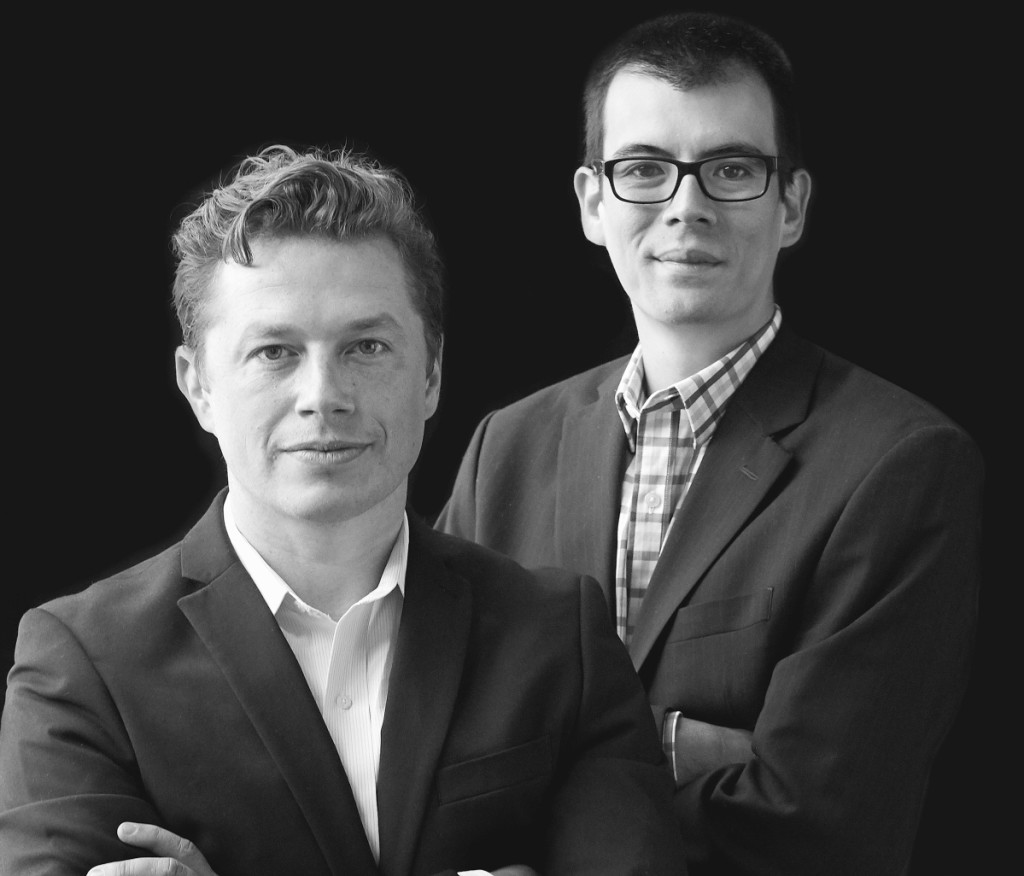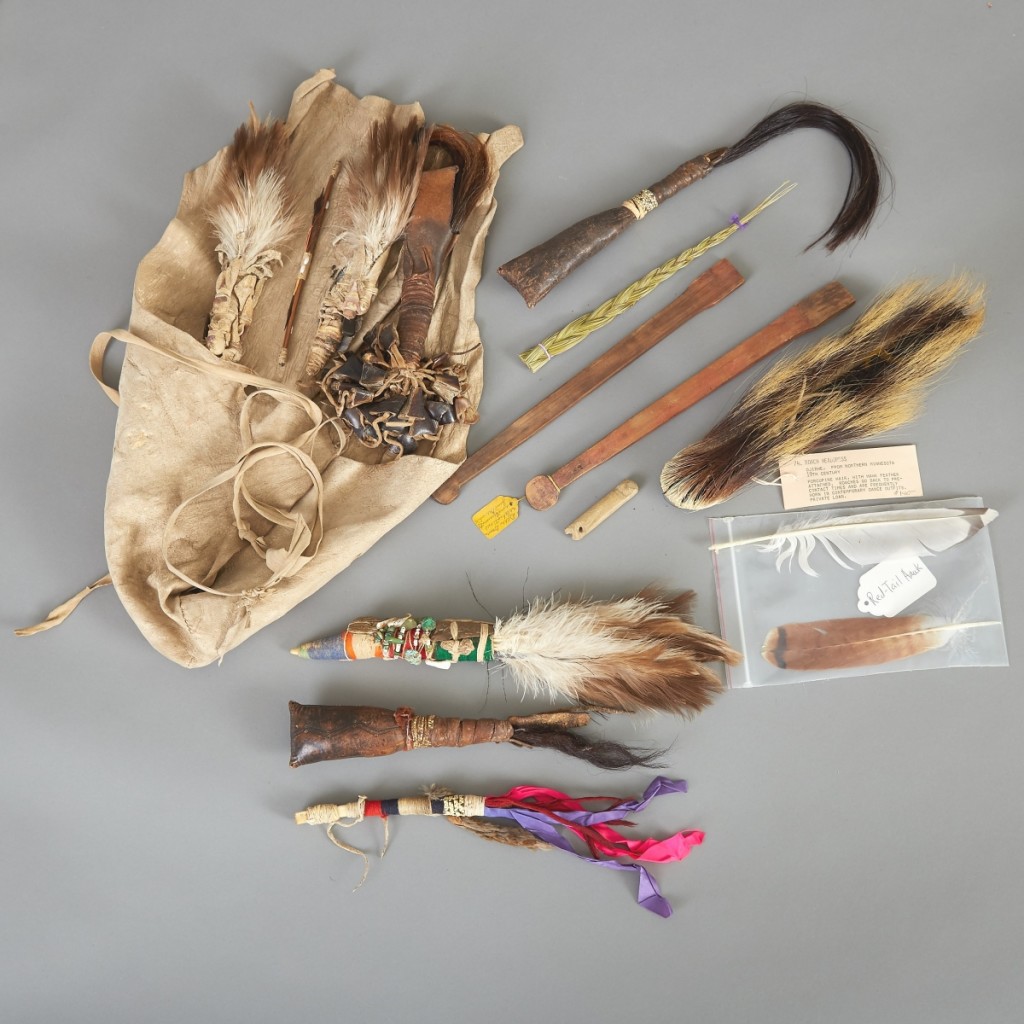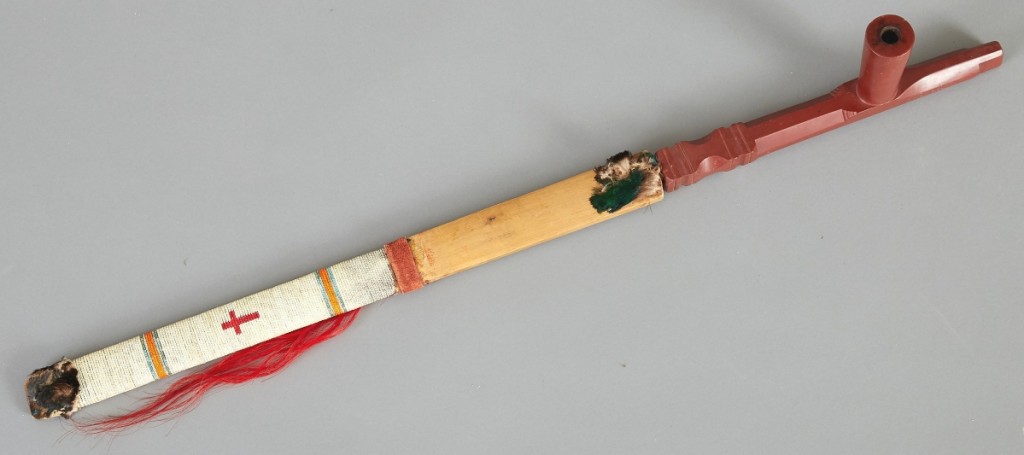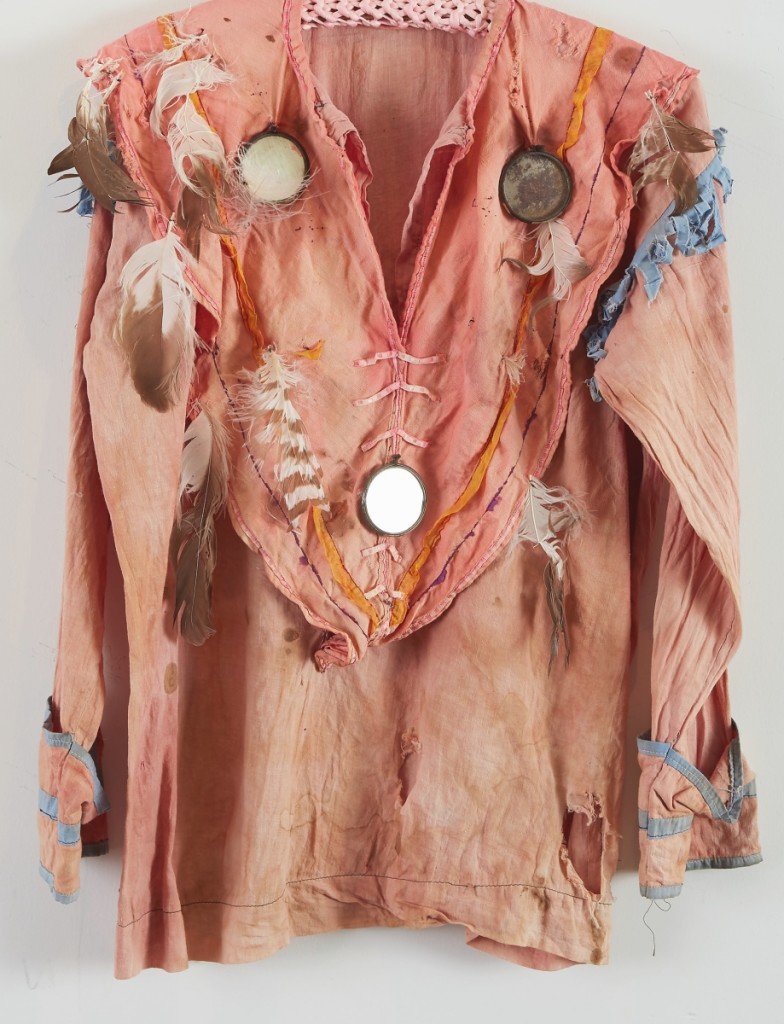The field of Native American antiques and antiquities is a collecting category riddled with potential moral hazards. Revere Auctions, in St Paul, Minn., which was started in 2017, is taking a slightly different approach by working with collectors and Native American groups to return to First Nation Tribes objects that have significant cultural value. Antiques and The Arts Weekly reached out to Revere Auctions’ co-owners Sean Blanchet and Robert Snell to explain the nuances of this initiative and why they think it is a game-changer for the field.
How long has Revere Auctions been selling Native American objects?
We got our first large collection of Native American objects in the spring of 2018.
What is the biggest concern you’ve come up against during this time?
In January of 2019, we had a large collection of Native American objects consigned to us, many of which had significant spiritual or cultural significance. In dealing with this collection, it became clear that we needed to find a way to help people ethically liquidate collections of this nature. Our biggest concern in doing this was to find a way that protected the consignors and buyers from unwanted attention while also doing the most we could to support tribes.
What did you do about it?
This situation prompted what has evolved into our current Native American Objects Ethics statement, which you can read at (https://www.revereauctions.com/native-american-objects-ethics-statement/). We consulted with Shannon Keller O’Loughlin from the Association on American Indian Affairs and produced a document that outlined a new method for engaging the tribes that protected the art market while also ensuring that tribes didn’t have to drive up prices of their sacred objects – in turn allowing an auction house to massively profit from their efforts to get back sacred items. We were able to immediately launch our policy into action, and were able to find donors to help return several of the most culturally valuable items to the tribal nations they had originated with, which was really exciting.
Consignors were paid, and some items were returned to tribes. Everyone directly involved in the transaction was pleased.
Can you summarize the steps you take when a Native American object comes to Revere for sale?
The first thing we do is notify appropriate authorities, such as Tribal Historic Preservation Officers, who can review the item and flag any that are culturally significant. Those items are subject to a seven-day waiting period between the auction and when the buyer can pay and collect the item; this period of time allows the tribal nation to appeal to donors and/or the consignor. For these appeals, we solicit written explanations of the significance of the objects, which are then used to provide the information necessary for consignors, buyers and outside donors to consider donating the objects. If the tribal nation wants, they can buy the object for the hammer price without inflating the market for items tribal authorities feel are inappropriate for sale. Or, a donor can buy the object for the hammer price and donate it to the appropriate tribal nation. After a tribal nation has worked with us for an auction, if they ask us not to sell objects from their nation, we will honor that wish to the best of our ability.
I think a really important aspect of our policy is that it is a constant work in progress – we are aware that this is an extremely complicated and sensitive issue, and the discourse is constantly evolving. Because of that, we feel very strongly that our policy should not be set in stone – it is open to change as we continue to learn and listen.
What if a consignor is adamant about selling a Native American object at auction? As an auction house, do you have any recourse? What recourse do tribal communities have?
For many collectors, donation isn’t really an option, often for financial reasons. In these cases, having the items at auction is actually an advantage – it prevents the items from being sold privately, and it makes the object visible to the wider public. We communicate with authorities from tribal nations and work with them to determine which objects are good candidates for consultation. If items are flagged, we have a seven-day period after the auction in which the tribal nation or a donor can purchase the object directly after the sale at the hammer price. This prevents tribal nations from having to bid in the auction, which would drive prices up for sacred objects and actually strengthen the market for them, which is directly in opposition to what we’re trying to achieve. This system ensures that the consignor gets paid out for the objects, but still provides a feasible way for the objects to return to the tribe.
What are some of the nuances of this initiative?
There are a lot of different groups of stakeholders with very different ideas about the right thing to do in the situation. Our most important objective is to start making the auction market a more ethical place. However, we also are working closely with collectors for whom building these collections was their life’s work, and it’s important to respect that some people have made a huge investment of time and money into their collection. So far, all of the collectors we have worked with have complex needs and feelings. They want to do what they feel is the right thing while also realizing the financial value of the collection. As a result, we see collectors selling some pieces of their collections and donating others. I think a lot of our customers have been really surprised by how pleasant the whole process is.
More broadly, the crux of this issue is that we’re trying to bridge the gap between very distinct cultural understandings of ownership. In many cases, something a collector might see as an interesting historical object that it’s fine to buy and sell is understood by the people who created it as a sacred living being and not at all an object that can be sold or even owned.
So, it’s important to keep an open mind and make an effort not to take for granted the Western ideas of property and ownership that the auction industry in the United States is founded upon.
Is Revere Auctions unique in doing this?
We’re definitely part of a larger trend of institutions working to focus more on the ethics of how we handle Native American objects. However, at this time we are the only auction house with a public statement of ethics and a transparent process for dealing with sensitive objects that we know of. I suspect this will start to change rapidly. We see the collectors as just normal people trying to do the right thing. However, auction houses using a history of oppression and abuse to squeeze higher prices for sacred objects is simply wrong and should stop. They need to find a way to not force the tribes to bid against collectors for objects.
Can you talk about some of the objects Revere Auctions has worked with to successfully return to tribes?
One of the most notable items we’ve been able to return was a group of ceremonial objects. These objects had come to us in a bundle, which comprised many items that were clearly ceremonial – rattles and whips, among other objects – but were otherwise something of an enigma. The provenance was not terribly clear, and it was difficult to determine which Native American group they had originated from. Once we started conversations with tribal nations, it turned out that these objects had come from a few different groups. Several of the objects were returned to the Navajo Nation, and several to the Oglala Lakota Nation.
When the consignor found out – from Revere Auctions – what these objects meant to the tribes they were very pleased to return them. For them it confirmed some long-held suspicions that these were significant. This individual chose to donate a small portion of their collection and sell the rest. They made nuanced and pragmatic decisions without pressure or their identity being revealed.
In another case we auctioned off a beaded bag from the White Earth Anishinaabe Nation. The woman who won it during the auction knew that it was subject to a seven-day holding period and was happy to wait. During that time the consignor said they didn’t want to donate it, so the tribe found a donor who paid the hammer price for the object. The woman who won was pleased that she was able to bid in an auction that was not pitting her against the tribe and she would have owned the item with a clear conscience. What’s significant about this story is that this woman is a casual collector in her early thirties. The bottom line for older collectors is that if they want to build a new generation of collectors to keep their values up, they need to support the sort of ethical marketplace that young people need to feel comfortable. If collectors are interested in learning more, visit our website at www.revereauctions.com.
-Madelia Hickman Ring













